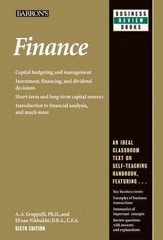Answered step by step
Verified Expert Solution
Question
1 Approved Answer
1.a) Big City Manufacturing (BCM) is preparing its cash budget and expects to have sales of $450,000 in January, $375,000 in February, and $555,000 in
1.a) Big City Manufacturing (BCM) is preparing its cash budget and expects to have sales of $450,000 in January, $375,000 in February, and $555,000 in March. If 20% of the sales are for cash, 45% are credit sales paid in the month after the sale, and another 35% are credit sales paid 2 months after the sale, what are the expected cash receipts for March?
1.b) In problem 1.a, Big City Manufacturing (BCM) assumed that all credit sales were paid in full, which is not realistic. BCM studied its past credit sales and determined that 3% of its credit sales resulted in Bad Debts that were never collected. Using the data from the previous problem with the new assumption that 3% of credit sales were never collected, what is your revised estimate for the expected cash receipts for March?
1.c) In problem 1.a Big City Manufacturing (BCM) assumed that all credit sales were paid in full, with no bad debt expense. For this problem, please assume that bad debt expense is again 0% for BCM. Purchases for next month's sales are 60% of projected sales for the next month, and April sales are estimated to be $495,000; purchases for April are paid in cash in March. "Other payments," which include wages, rent, and taxes, are 25% of sales for the current month. Construct a cash budget for March using your expected cash receipts from problem 1.a and calculate the average net cash flow during the month of March.
1.d) Big City Manufacturing (BCM) follows a moderate current asset investment policy, but is now considering a change, perhaps to a restricted or maybe to a relaxed policy. BCM's annual sales are $1,400,000; its fixed assets are $950,000; its target capital structure calls for 40% debt and 60% equity; its EBIT is $450,000; the interest rate on debt is 8%; and its tax rate is 20%. With a restricted policy, current assets will be 20% of sales, while under a relaxed policy, current assets will be 35% of sales. What is the difference in the projected ROEs between the restricted and relaxed policies?
Step by Step Solution
There are 3 Steps involved in it
Step: 1

Get Instant Access to Expert-Tailored Solutions
See step-by-step solutions with expert insights and AI powered tools for academic success
Step: 2

Step: 3

Ace Your Homework with AI
Get the answers you need in no time with our AI-driven, step-by-step assistance
Get Started


